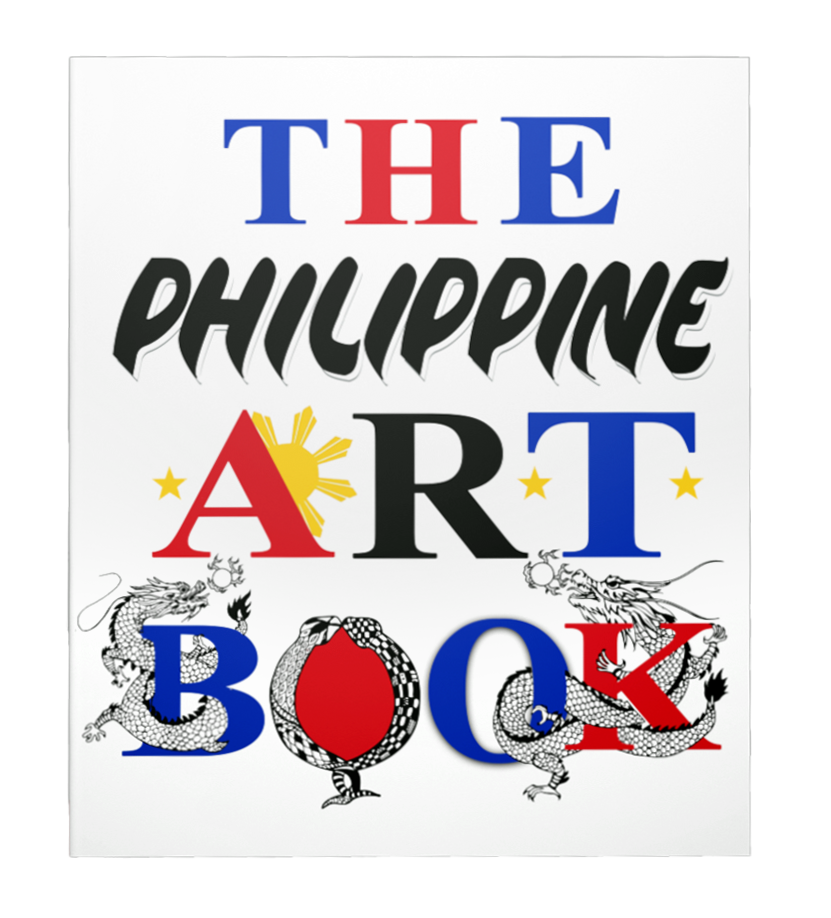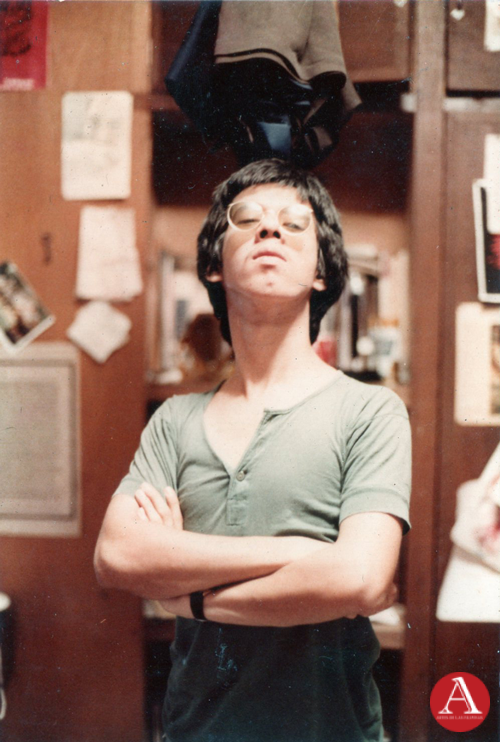
FEDERICO SIEVERT’S PORTRAITS OF HUMANISM
by: Christiane L. de la Paz
JUNE 2024 – Federico Sievert was known for his art steeped in social commentary. This concern runs through a body of work that depicts with dignity the burdens of society to offer a counter-narrative to demagogues and shape the future generation’s understanding of the nation’s socio-political past. The problems of slums such as inadequate housing and squalid, overcrowded, joblessness, urban poverty, aspirations and strength of will became his thematic discourse. Sievert was a pivotal member of the Concerned Artists of the Philippines, ABAY and SANGGAWA, giving him a more visceral expression in understanding the lives and struggles of the poor and even fighting the same fight as they did. When the demands for socio-political works slackened, Sievert took a break from his visual work, later resurfacing with art that was cathartic, familial and spiritual in bent. His reflection on faith, skepticism, self-worth and valuing his works vis-à-vis the works of other male artists was confessed in his canvas. With renewed attention to his work, Grace de Jesus, his wife, holds a mirror up to pay tribute to his life and art. She portrayed a picture of the painter as a husband, father and pastor, his first forays into art and ruminates why he did not experience the success that he deserved. Even after all this time, Federico Sievert’s art remains wrapped in an aura of mystery and received little recognition in his lifetime. The display of his archive images opens up his work to the public in the hopes of achieving a higher level of recognition and curatorial respect.
Federico Sievert was a college senior in 1982 when his painting, Aliping Walang Malay, won the gold medal at the Thirty-Fifth Art Association of the Philippines Annual Art Competition. What was the image portrayed and the general reviews or feelings about this work?
I don’t know the details of this painting. I messaged the Official Facebook page of the Art Association of the Philippines to inquire if they keep records of the past awardees. Up to this day, they have not replied. Fred’s engagement with the senior progressive social realist artists started when he was in his third year in college in 1981. The themes of his paintings were social issues since he actively engaged with progressive senior artists such as Egai Fernandez, Papo de Asis, Adi Baen Santos, Jose Tence Ruiz, among others.
In 1982, he and his classmate, Willy Layug, were the first -winners at the University of the Santo Tomas on-the-spot competition. They were featured in the Ang Varsitarian, but the title was not mentioned in the article. What was depicted in his painting was a man inside a prison cell with a raised fist. He was already into social realist subjects during his studies.
.png)
Ang Varsitarian Feature, August 1982
Title Unknown, First Prize on the On-the-Spot Painting Competition with the theme, What the World Should Be, UST Foundation Day 1982
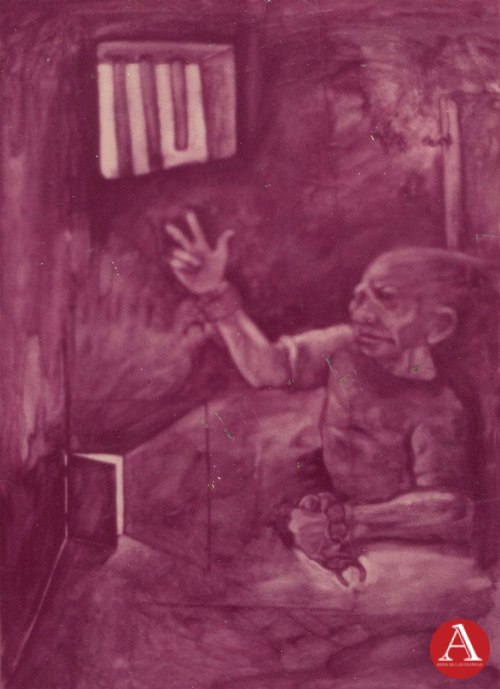
First Prize Winner in the UST student art competition on the theme, What the World Should Be
Are there other subjects that he painted during his college years at the University of Santo Tomas?
From 1979 to 1981, he painted still life, landscape, and composition, showcasing his proficiency in these subjects. In 1982, he began engaging with esteemed senior artists such as Egai Fernandez, Papo de Asis, and others, leading to a shift in his themes toward social and political issues. In 1983, his focus was on slum communities, which was the theme of his thesis, wherein he created two expansive pieces measuring 4 feet by 8 feet, which are now on display at the Singapore Museum.
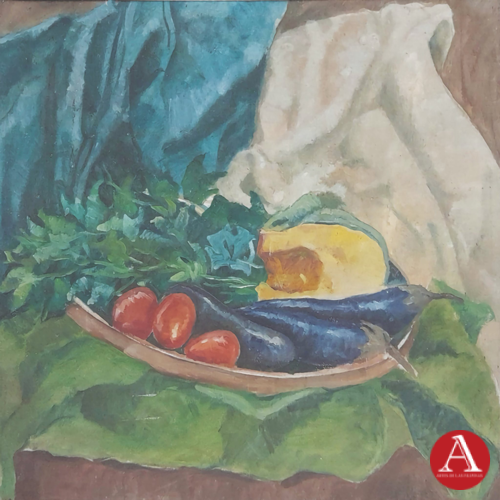
Still Life, 1980
First Honorable Mention
What were the other titles of his key works in the 1980s?
In 1983, after the death of Ninoy Aquino, rallies needed street murals. Fred became active in a group who were commissioned to do murals for political rallies and events.
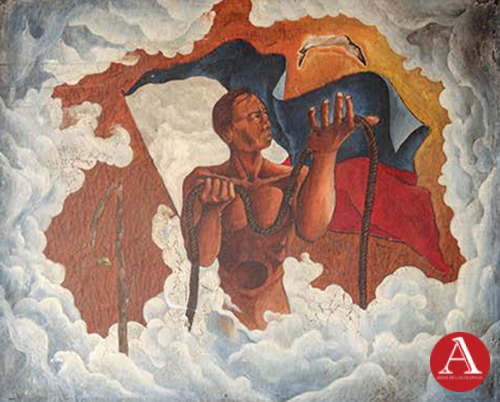
Kung Sana Nagkaisa, 1982
First Prize, Composition on the theme: What the World Should Be, UST Foundation Day 1982
Would you say that his works were optimistic or critical depictions of the masses?
They were mostly critical depictions. Some fellow artists jokingly see his works as “galit sa mundo.”
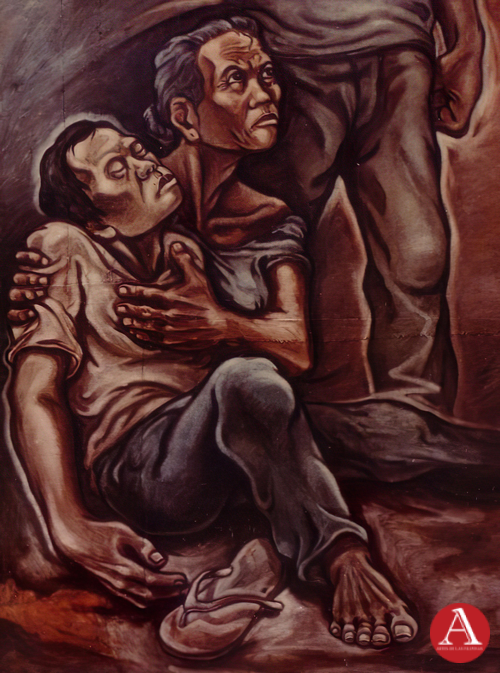
Mag-ina, 1985
When did he join the Concerned Artists of the Philippines and ABAY?
He joined the Concerned Artists of the Philippines (CAP) after the death of Ninoy Aquino. CAP was formed in August 1983. Sievert graduated in March 1983.
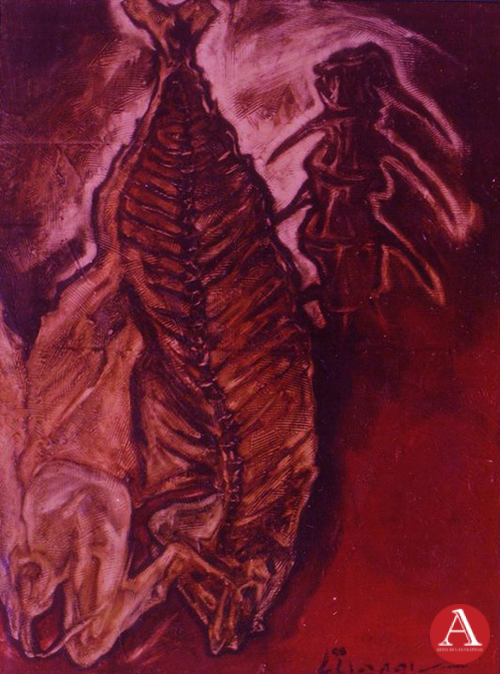
Mural Making Workshop for Cordillera Movement, 1985
What made him join SANGGAWA and what activities of the group that he actively participate in?
Sievert was the last artist to join the group, SANGGAWA, composed of Mark Justiniani, Elmer Borlongan, Karen Flores, Manny Garibay and Joy Mallari. It was Mark and Elmer who convinced Sievert to join the group. These artists also came from ABAY.
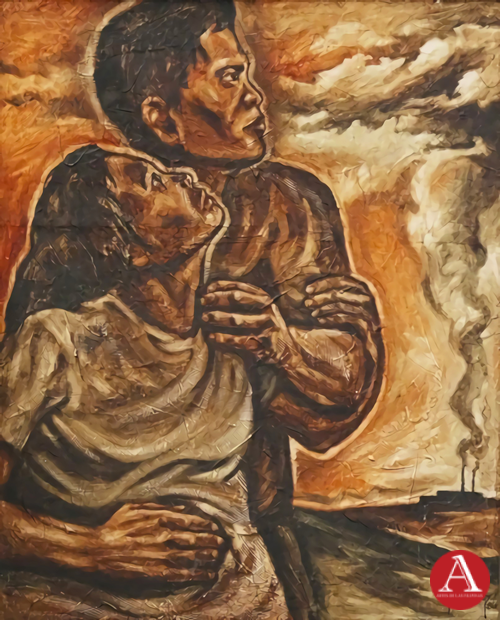
Lovers, 1986
Sievert also joined the theater group, Tambisan sa Sining. What were his activities in the theater?
According to his friend, Joel Saracho, he always played the role of Uncle Sam because of his mestizo features.

Daing, 1987
Painting Exhibited during his Second Solo Exhibition
He staged his first one-man show in 1988 at the De La Salle University. Can you tell us some details of this show and the reviews received, if any?
It was Alex Umali, the curator of the gallery at that time who gave him the opportunity to exhibit in De La Salle. He was a friend of Sievert. I asked for some details from Alex about the exhibit, but can’t remember important details about it.
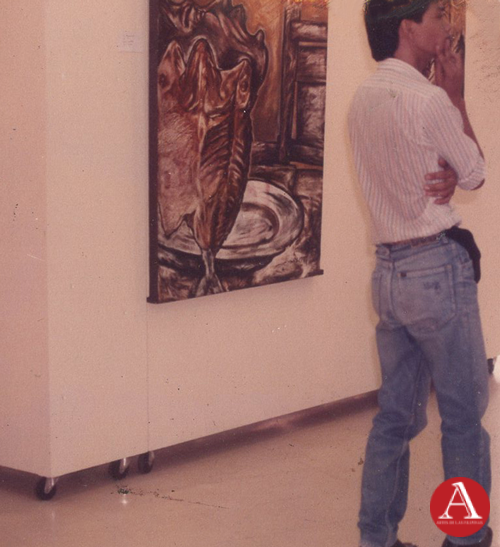
His painting, Daing, during his first one-man show at the De La Salle University
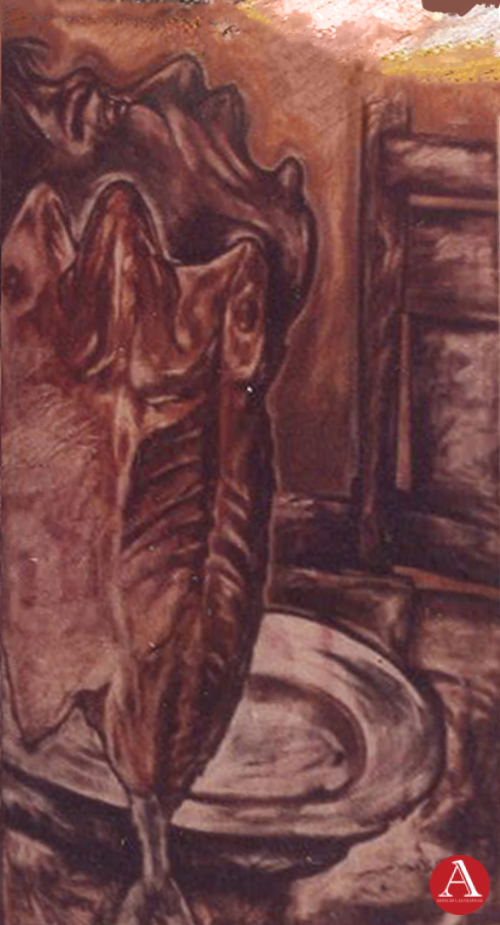
Daing, 1987
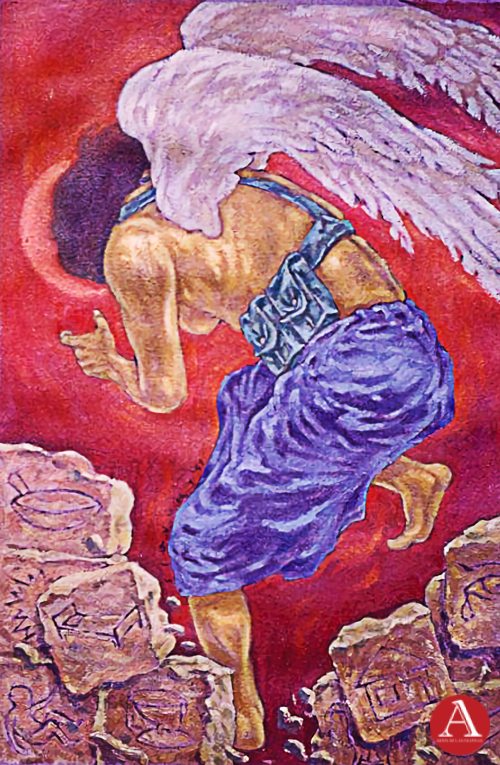
Filipina, Migranteng Manggagawa, 1985
Part of the group exhibition on the theme of Filipina, Migranteng Manggagawa, Main Gallery, Cultural Center of the Philippines in 1993
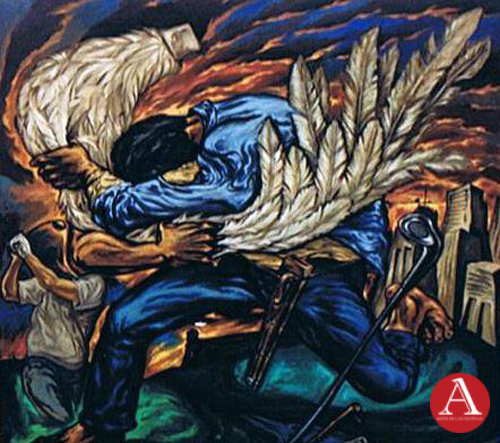
Sandaan, 1997
In Commemoration of the 100 years of Philippine Independence
Depicting the issue of farmlands converted to golf courses
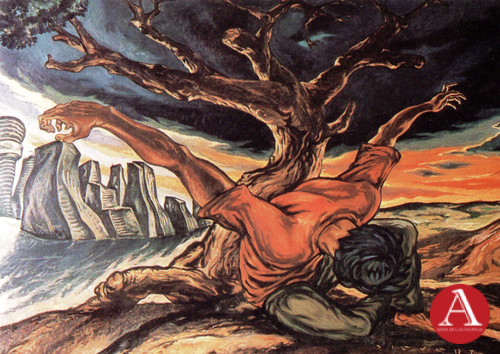
Krusipiksyon, 1997
It took him nine years to launch his second solo exhibition in the Boston Gallery. What was the title, theme and imagery shown in his second solo exhibition?
It was staged from August 9 to 23, 1999. The title of the show was Recent Paintings, a continuation of his social realist subjects.
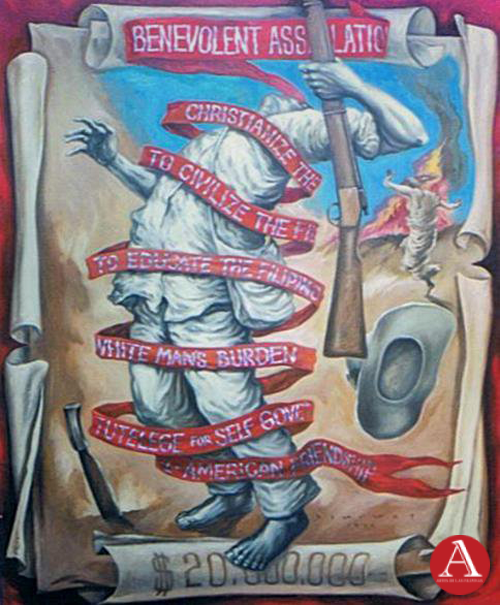
Benevolent Assimilation, 1999
Shown in the group exhibition at the Philippine Contemporary Arts, Puffin Room Gallery, SoHo, New York, USA in 1999
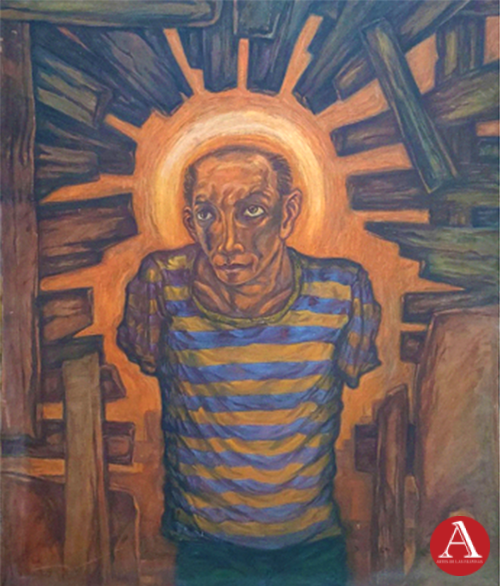
Bihag, 1999
Shown in the year-end group exhibition, ALAY3, at the Boston Gallery
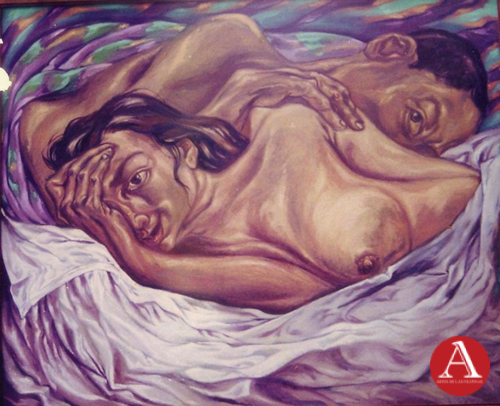
Pahinga, 2000
In 2002, his third solo exhibition, Gabriel, was dedicated to his son. Tell me about this show.
Sievert’s third solo exhibit focused on the theme of family and fatherhood, particularly exploring his relationship with his son, Gabriel. The subject matter of his paintings, which deviated from his usual social realist subjects, was met with mixed reception. Many viewers, accustomed to his previous works, found it challenging to connect with the deeply personal themes presented in this exhibit. No succeeding solo exhibitions after 2002 took place due to lack of fund but he continued to join group exhibitions:
2002 “Recent Works 4,” Kulay Diwa Art Galleries, Sucat, Paranaque
2002 “Alay 6,” Boston Gallery, Cubao, Quezon City
2002 “Pagtatagpo,” Gathering art uplifting lives, RCBC Plaza, Makati City
2002 “Eros Pinoy Exhibit,” The Crucible Gallery, SM Megamall, Mandaluyong City
2003 “Alay 7:Conceptions, “Boston Galllery Cubao, Quezon City
2004 “Alay 8,” Boston Gallery, Cubao, Quezon City
2004 “USWAG Exhibition,” Kanhuraw Convention Center, Tacloban City
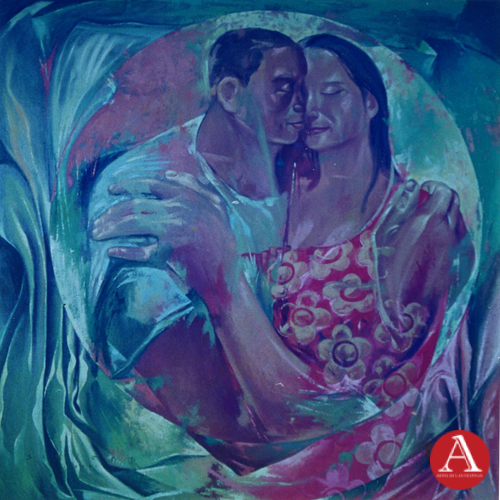
Kasama, 2001
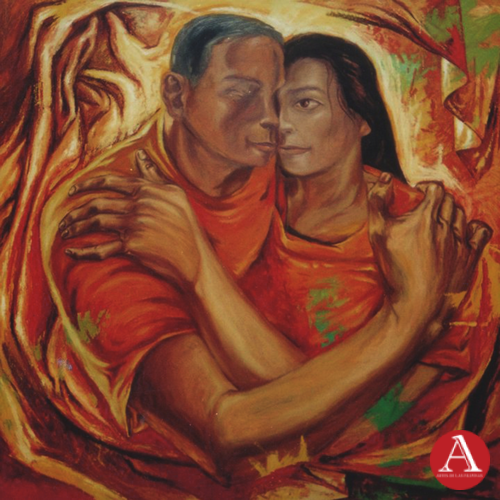
Kasama 1, 2001
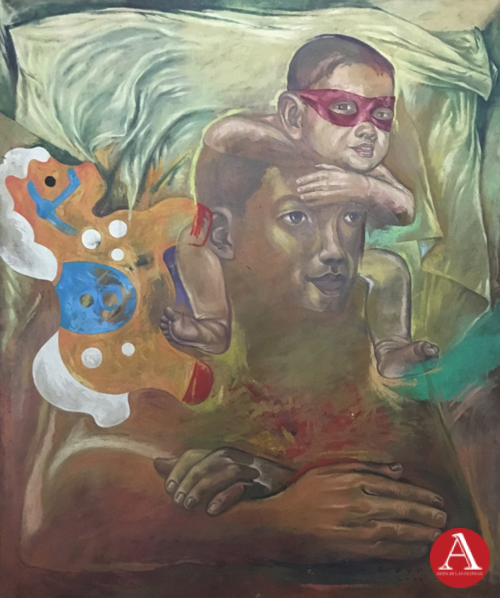
Horsey-Horsey, 2001
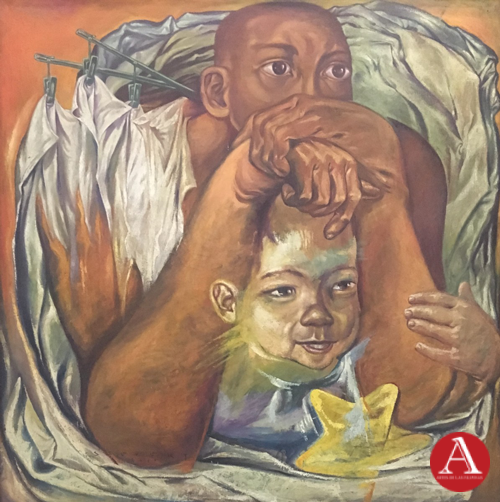
Pagkabahala, 2001
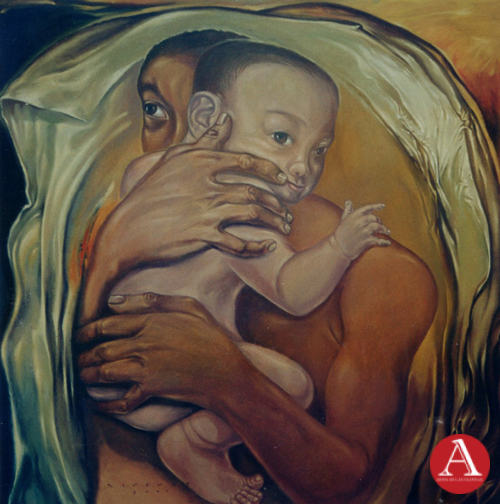
Kalong, 2001
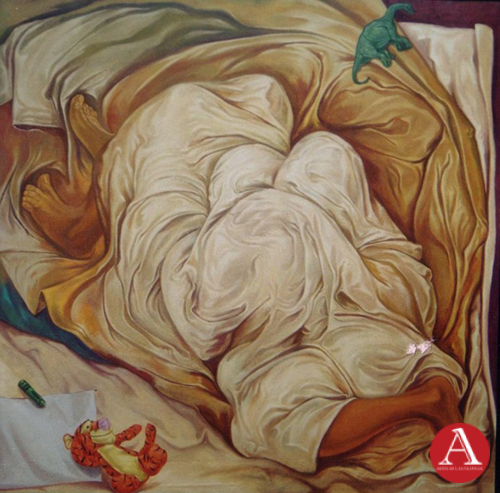
Taguan, 2001
In 2005, he surrendered his life to Christ. What are the events leading to his decision to become a minister?
Sievert plunged into deep depression as a result of financial challenges and the arduous journey of being an artist. This period of hardship prompted him to embark on a quest for deeper spiritual fulfillment, eventually discovering solace in his newfound faith in Christianity. He whole-heartedly immersed himself in ministry, dedicating his time and energy to this pursuit until he eventually transitioned into a full-time pastoral role in 2012.
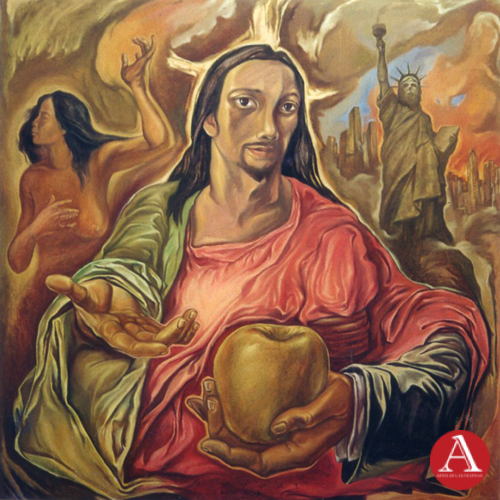
Liberty Misleading the World, 2002
Did he continue his painting career while being active in church?
Because of the scarcity of art supplies, he faced constraints in creating further works on canvas, only managing to produce a few sketches. He had limited workspace since we reside in a small room in a church in Pasig. Being a pastor demanded his full attention, leaving little time to dedicate to his artistic endeavors.
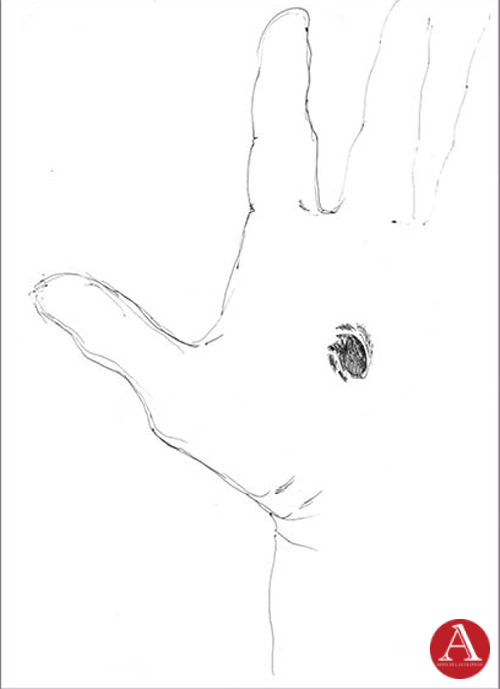
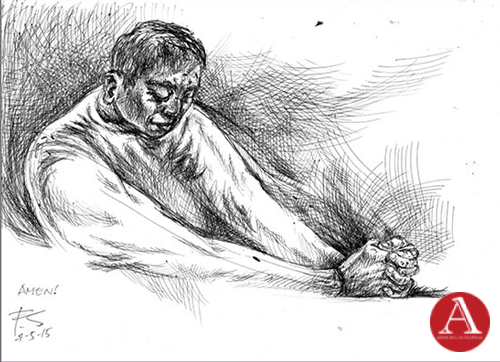
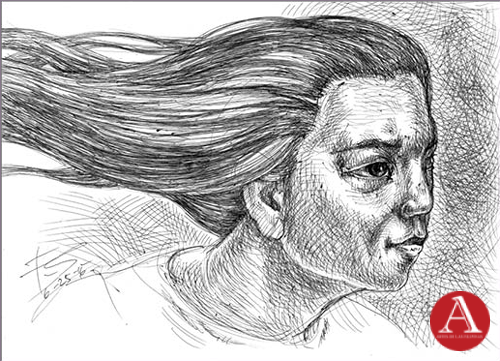
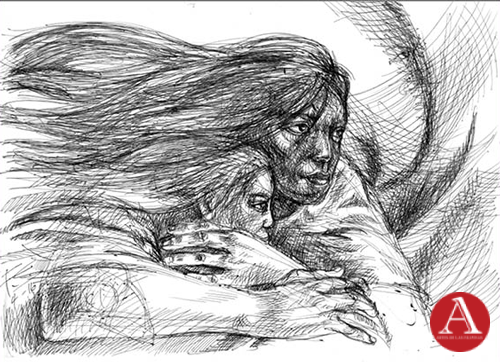
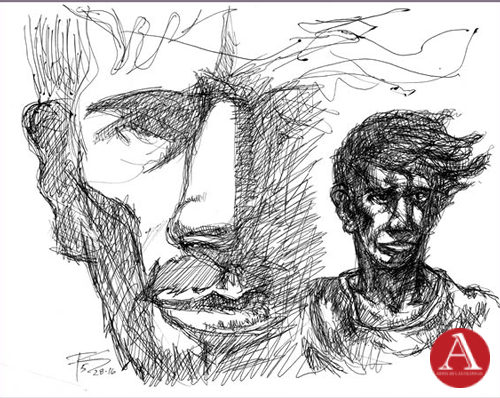
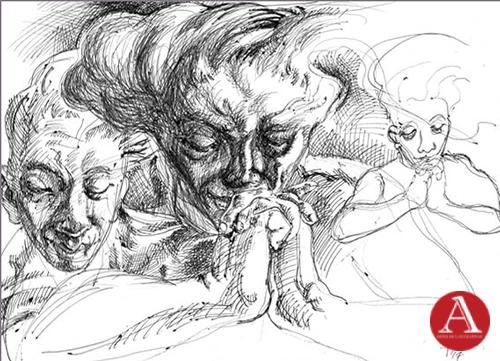
What are the themes of his small number of works after this transformative turn of events?
His artistic themes predominantly revolved around his faith. Despite limitations in resources and time, he managed to create a few small-sized works, including sketches, reflecting his deep spiritual convictions.
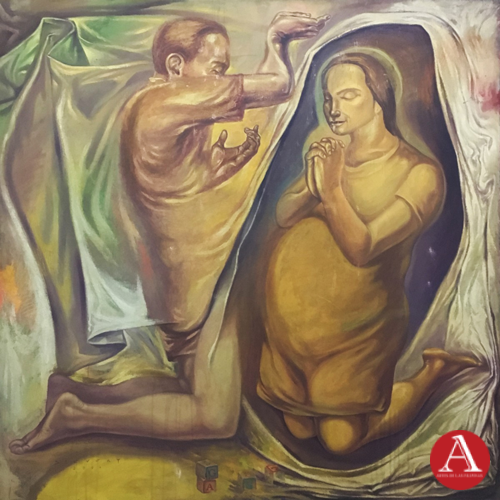
Pasasalamat, 2002
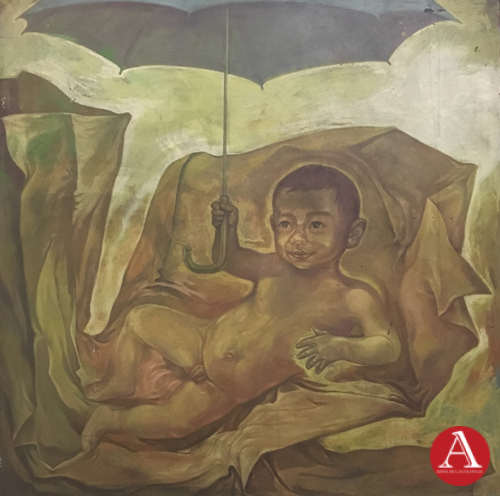
Payong, 2002
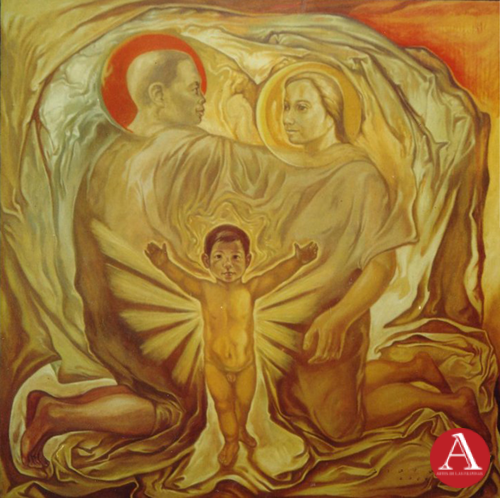
Untitled, 2002
What gallery carried his works?
He entrusted his paintings to galleries for consignment, yet none of his works were sold. As per one gallery owner, customers were still anticipating Sievert’s angry works, indicating a preference for his earlier, more emotionally charged pieces.
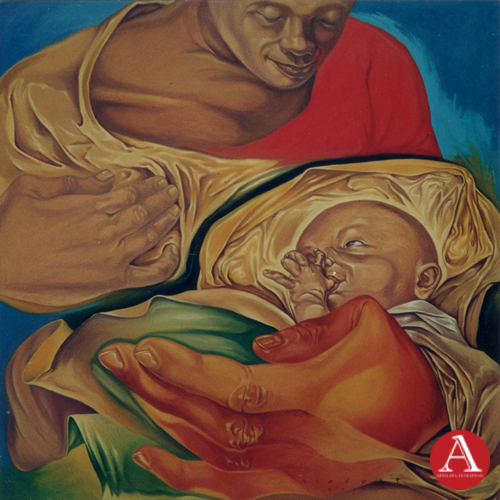
Bagong Tatay, 2002
Sievert is not a common last name in the Philippines. Can you tell me about his family lineage?
Sievert’s family has a book entitled, “Across the Seas: Three Brothers Find New Lives in Colonial Philippines,” which was written by Antonio R. Sievert and published in 2004. “This non-fictional narrative is the story of three brothers, Carlos, Jorge and Jose Sievert y Barriere, who in the late 19th century made the courageous decision to leave their home in Cadiz, Spain, for the Philippine Islands, the last of Spain’s colonial possessions, in search of a more rewarding life. The new immigrants learned about their adopted country’s turbulent past, affecting both Christian and Muslim natives, and its cultural and economic transformation from Andres Reyes, a successful abaca trader, born and raised on the Visayan island of Samar.”
Federico Sievert’s great-great-grandparents hailed from Germany and later migrated to Spain. The three brothers, Carlos, Jorge, and Jose Sievert departed from Cadiz, Spain to settle in the Philippines. They wed three Filipina Reyes sisters, the daughters of Andres Reyes from Samar. Jose Barriere Sievert and Rosario Reyes were Federico’s grandparents, while his father was Salvador Sievert, the youngest among nine siblings. Of the brothers, only Jose remained in the Philippines, as Carlos and Jorge returned to Spain with their spouses.
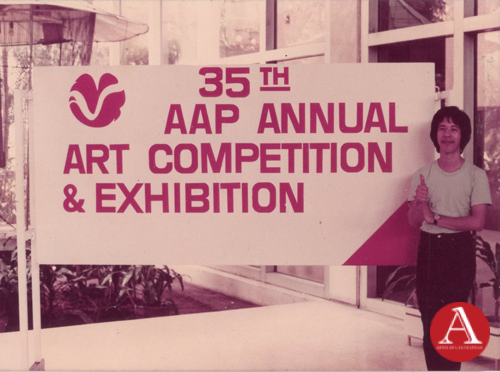
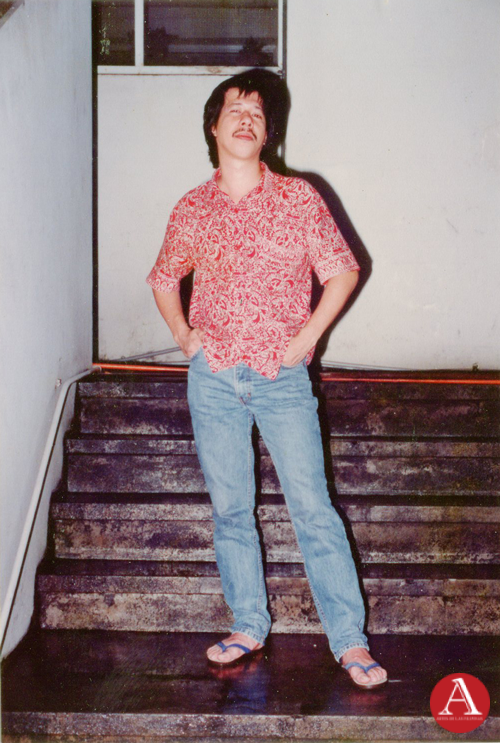
Sievert during his Student Years
Where did he finish his elementary and secondary studies?
He went to the Sacred Heart School in Tacloban City.
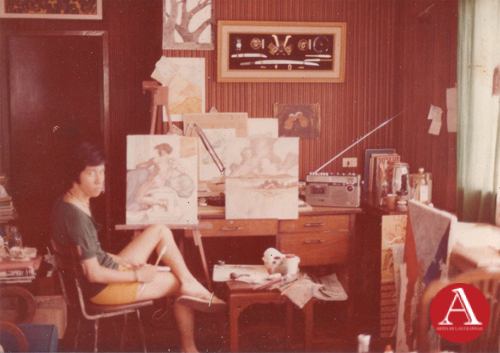
In His Studio
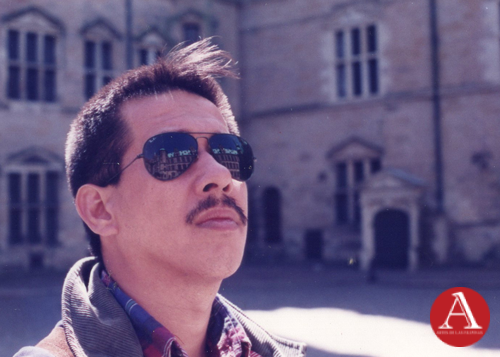
Denmark, 1997
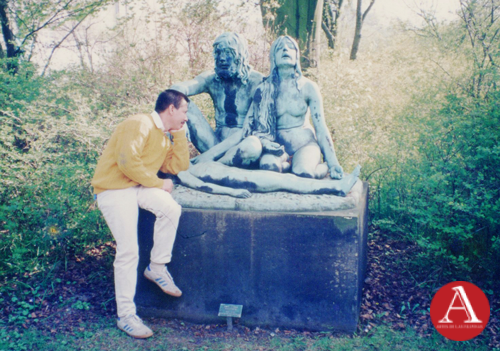
Denmark, 1997
Why did he choose to study Fine Arts?
He pursued a degree in Fine Arts in college due to his deep passion and talent for drawing, which had been evident since his elementary days. Despite his mother’s initial disapproval of his artistic pursuits and preference for him to focus on academics, his artistic abilities continued to shine through his high school years. His teachers often requested his drawings for school materials, and he even participated in school art competitions, winning some awards.
When the time came to select a course for college, his mother, a merchant, recommended Accounting or a business course in Tacloban. However, during a summer vacation in Manila with his brother, he took the opportunity to sit for the entrance exam for the Bachelor of Fine Arts major in Painting at the University of Santo Tomas. After learning of his acceptance to UST, he decided to stay in Manila against his mother’s wishes and dedicated himself to pursuing his passion for painting.
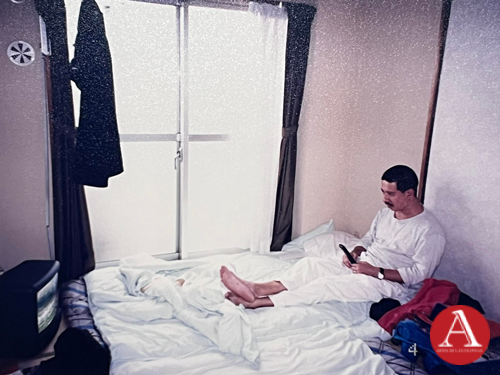
He worked as a magazine illustrator and layout designer for Midweek Magazine from 1985 to 1988. What was he assigned to illustrate and design?
He illustrated and designed the cover layout and inside pages of the magazine.
He was also employed as an art director of Kultura Magazine of the Cultural Center of the Philippines from 1989 to 1993. What were his responsibilities in this job?
He was employed as the art director of Kultura Magazine and was part of the CCP team as one of the videographers that documented historical architectures and significant locations across the Philippines.
What other videos did he manage during his stint?
He took on a role at the Cultural Center of the Philippines (CCP), contributing to a team that documented historical architecture and significant locations across the Philippines. His secondary role at the CCP was as a videographer.
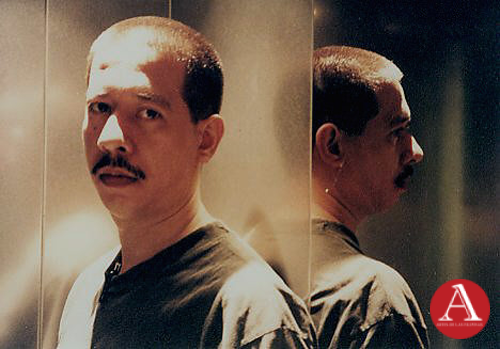
How did you meet?
We were classmates at the University of Santo Tomas College of Fine Arts. We both joined Artista ng Bayan. We got married on April 27, 1991, while working at the Cultural Center of the Philippines.
What do you call him?
I call him Ric, but when we became parents, we addressed each other Tatay and Nanay or Gras. Some question our choice of using the traditional terms Tatay and Nanay as too old-fashioned, but he wanted to embrace the traditional Filipino terms. He used his full name, Federico F. Sievert, as his artist name. Siev was his nickname among his artist friends and Fred to his Christian community.
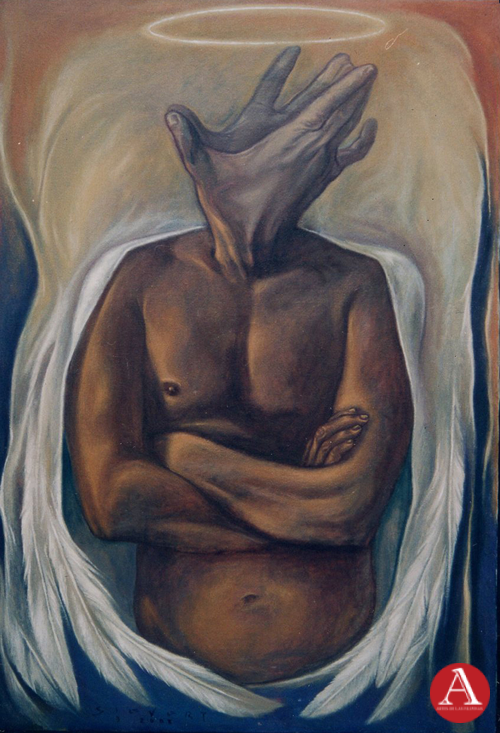
Life, 2003
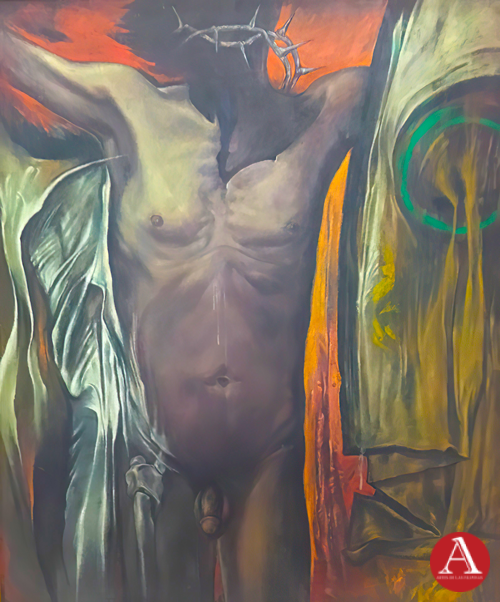
Presence, 2003
In what way did you influence Federico in his imagery?
Federico Sievert cherished his family dearly, viewing them as his most valuable treasure. This sentiment likely inspired his last solo exhibition, dedicated to his son Gabriel and centered on the themes of fatherhood and marriage. Through his art, he expressed his love and appreciation for his role as a father and husband, emphasizing the importance of family in his life and work.
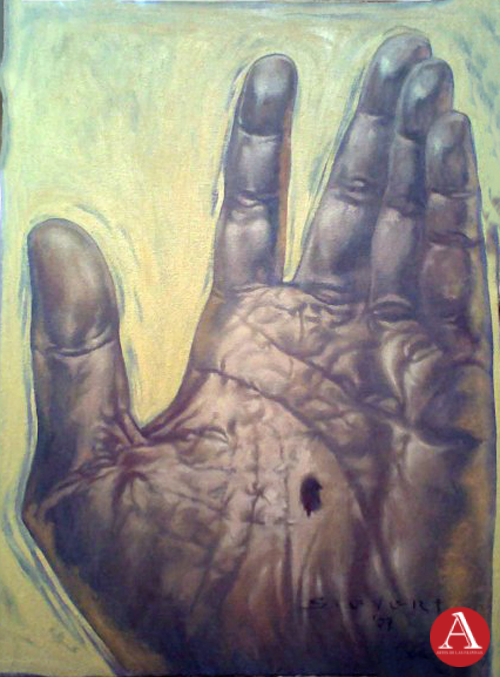
Pierced, 2007
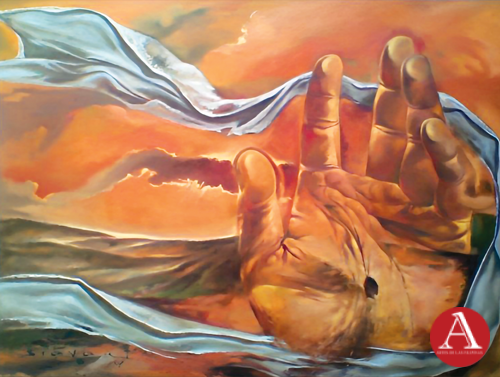
Risen, 2007
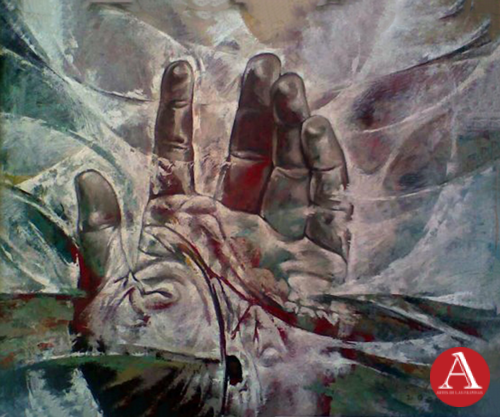
Alive, 2007
What are your favorite works of Sievert?
I have five favorite paintings of Sievert because they convey the deep significance of his subjects:
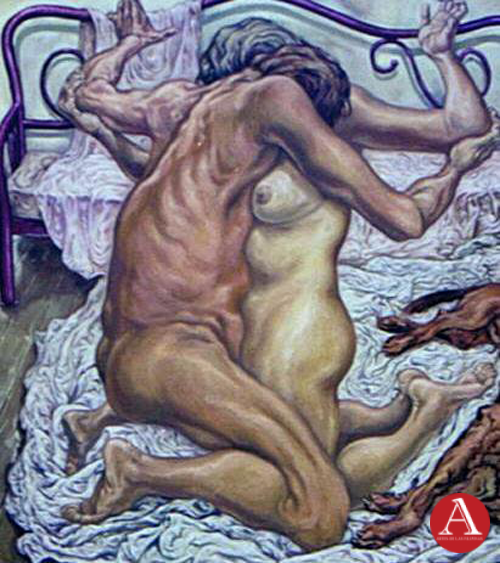
Pag-aalay, 1999
The painting documents the year when his wife got pregnant
The first piece, Pag-aalay, painted in 1999, was painted when I got pregnant with Gabriel after eight years of marriage. I got pregnant in 1999 and gave birth on January 23, 2000. The image depicts intimacy as an act of offering to God.
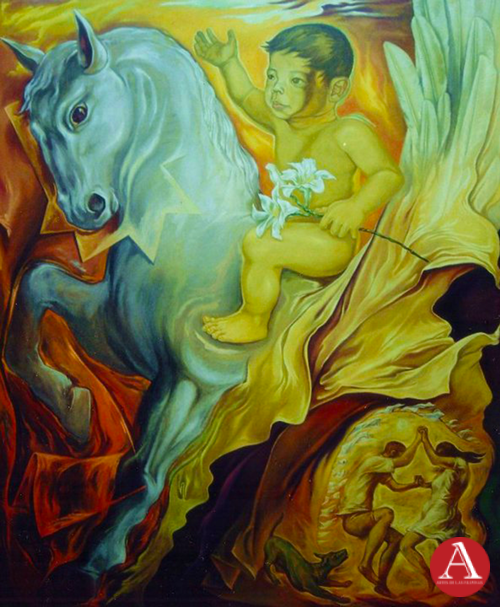
The Toddler (Gabriel), 2002
The second piece, The Toddler (Gabriel), painted in 2002, represents innocence and new life. The lilies symbolize purity and the white horse signifies strength and freedom. In the lower right corner, Sievert and I and our dog Bugs, are celebrating the arrival of Gabriel with excitement. Bugs was our first baby. Gabriel even used to call our dog Kuya Bugs.

Krusipiksyon, 2001
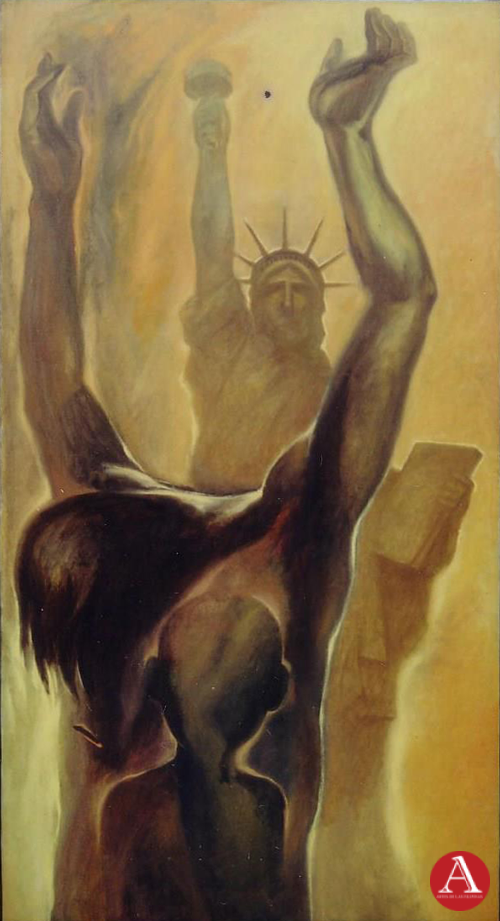
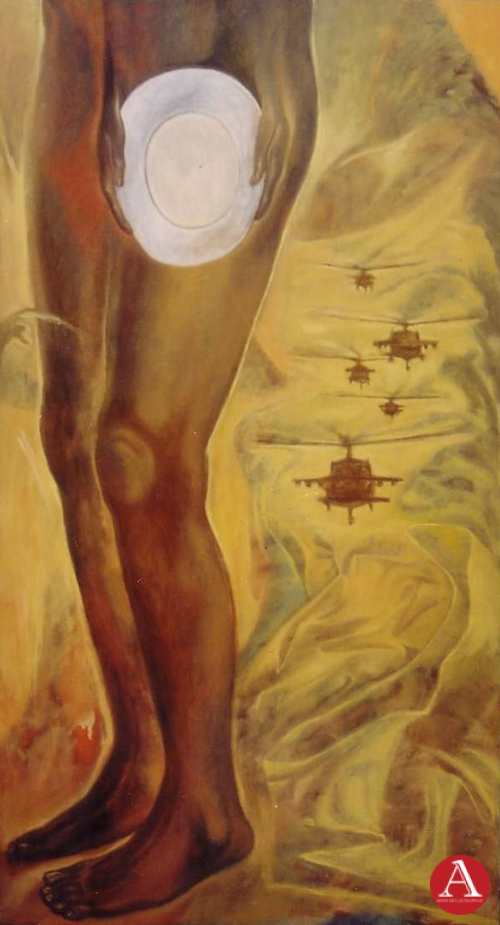
Krusipiksyon, 2001
(diptych)
The third painting, Krusipiksyon, painted in 2001, is another favorite of mine. This piece represents his artistic expression as a social realist and offers a preview of his spiritual expression in the future. He embraced his new faith in 2005. When I showed this piece to our artist friend, Jose Tence Ruiz, he said, “maraming ganap na itinutulay yang piyesang yan, kaya very good rep kay Siev.”
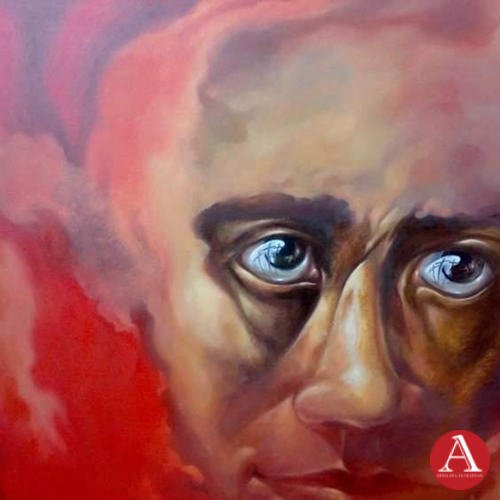
Witness, 2009
Witness, painted in 2009, is also memorable. This is his self-portrait that depicts him embracing his role as a witness for Christ, with the crucifixion reflected in his eyes.
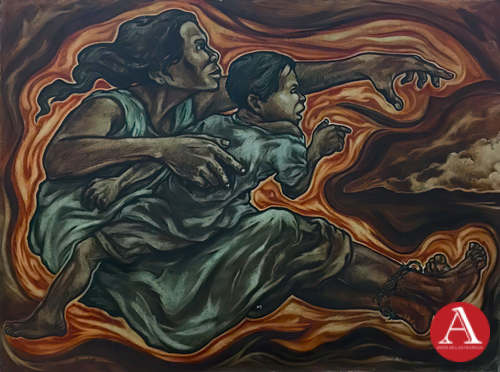
Mother and Son, 1985
Finally, his 1985 piece, Mother and Son. For me, the mother, with her feet bound in barbed wire, symbolizes the struggles and constraints they face, but she guides her child with a hand that points towards a better future. Sievert conveys a message of strength, and the determination of a mother to chart a brighter future for her child. Although this was created years before his passing, it felt like a message for me and my son. This painting is now in the office of the Kilusang Mayo Uno.
What constitutes his farewell works?
By May 2021, still in the pandemic, he was doing his weekly preparation for a month-long Pentecostal celebration. When taking occasional breaks, he would return to look at his sketches of images of the Holy Spirit. When he passed away on May 7, 2021, those sketches remained beside his table. I also see his family and faith paintings as his farewell works, signaling a shift from his usual focus on social-political content and serving as a prelude to his entry into full-time ministry. This is one of the two of his Holy Spirit series of sketches. No titles and no dates. They were mostly drawn on 9 x 12-sized paper using a ballpoint pen.
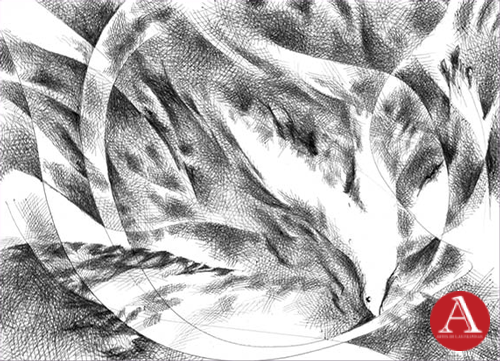
Holy Spirit
.png)
Am the True Vine and My Father is a Gardener
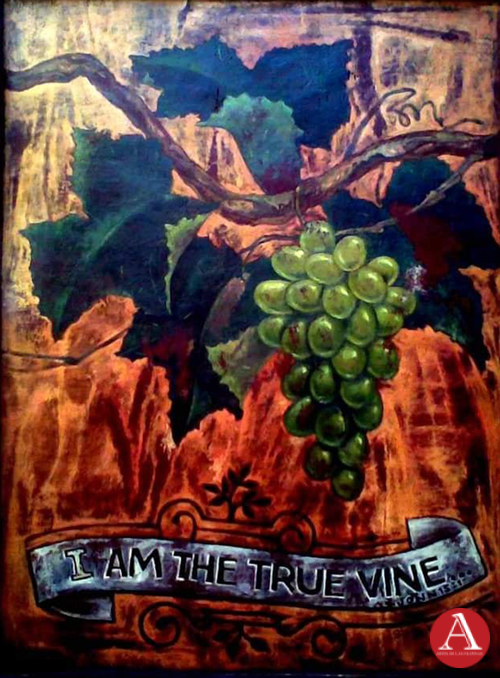
True Vine, 2007
Did he have wishes regarding his art and legacy before passing on May 7, 2021?
It is saddening to see that his hope of returning to his artistic pursuits remained unfulfilled, especially as he passed away during the challenging times of the pandemic on May 7, 2021. Despite this, his passion for art and creativity undoubtedly left a lasting impact on those who knew him and appreciated his work. His legacy as an artist and his dedication to his craft will continue to be remembered and celebrated by those who were touched by his talents and spirit. According to Jose Tence Ruiz, he was masipag at may integridad.
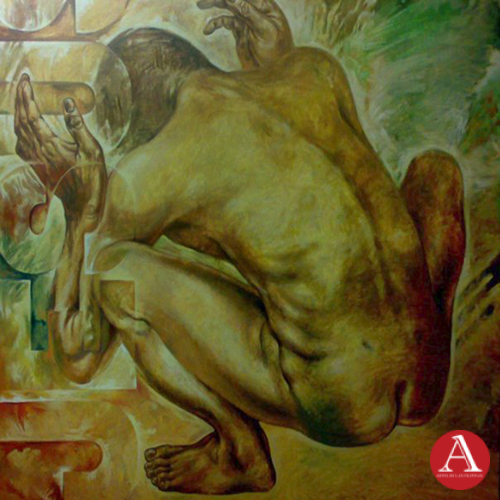
Surrender, 2008
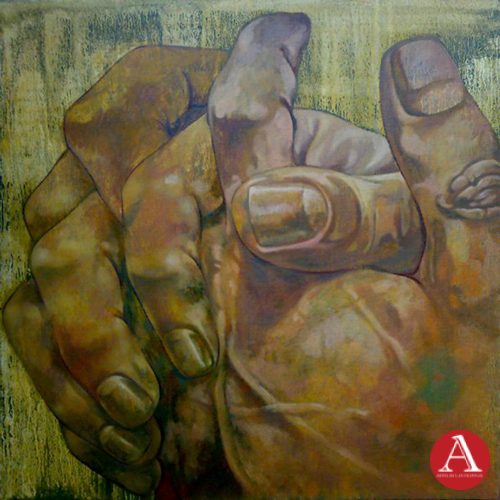
Praying Hands, 2008
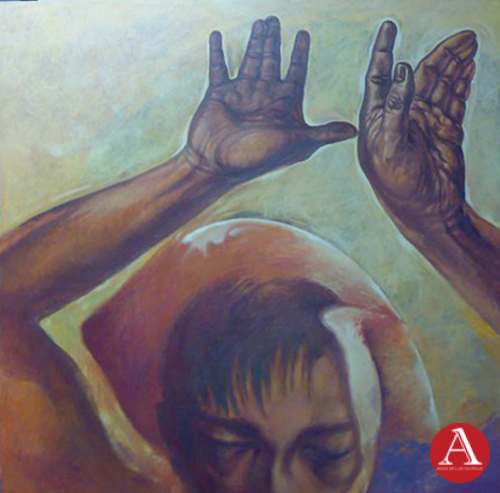
Untitled, 2009
As his better half, how would you characterize his journey as an artist?
Witnessing my husband’s pain and challenges during his art career was truly difficult. His paintings not only depicted the burdens of society but also his struggles with self-worth and value within the competitive art market. During his second solo exhibit, “Gabriel,” at the Boston Gallery, two years after becoming a father, he transitioned to themes of fatherhood. His show was met with a lukewarm reception from the art scene, as the viewers were accustomed to his previous social realist and provocative works. Sievert underwent depression and contemplated ending his life in 2005. His brother-in-law, Boni de Jesus, introduced him to a spiritual experience and guided him towards embracing his newfound faith. He felt compelled to answer his calling and so Sievert made the decision to transition into full-time pastoral work in 2012 at a community church in Ugong, Pasig. Later in 2015, he co-founded The Harvest Gospel Church and assumed the role of its head pastor until his passing on May 7, 2021.
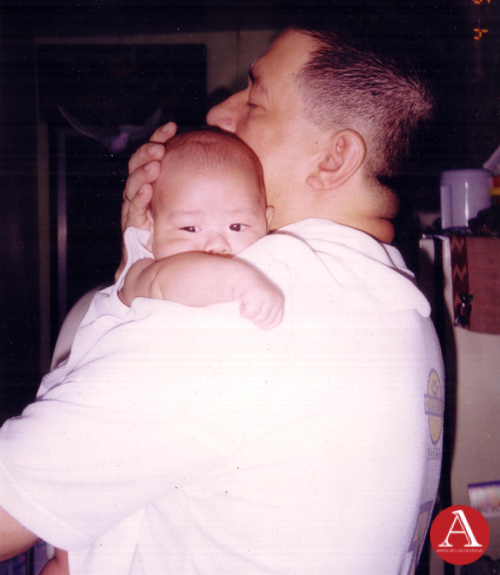
Sievert and his son, Gabriel
What does Gabriel think of his father’s works?
My son was born on January 23, 2000. He wrote this statement for his father:
I’ve always been proud of Tatay’s paintings. It’s an honor to be the son of someone with such talent. Growing up as the son of two artists, made me appreciative of art and that’s one of the things I’m grateful for. Tatay’s paintings feel like home. To be able to see his paintings feels like eating food cooked at home. I love how Tatay puts a lot of details in the eyes, hands, and wings whenever these are shown in his paintings. But what I love the most is how he and Nanany made a series of paintings about me as the subject. I believe that whatever the color of an artist’s world is, whether it be the color of grief, hatred, rebellion, joy, or love, their world is shown in their paintings. This makes me happy that I became his inspiration in his paintings.
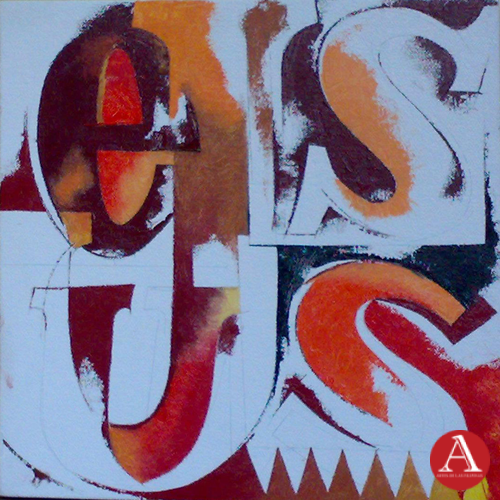
Jesus Text, 2009
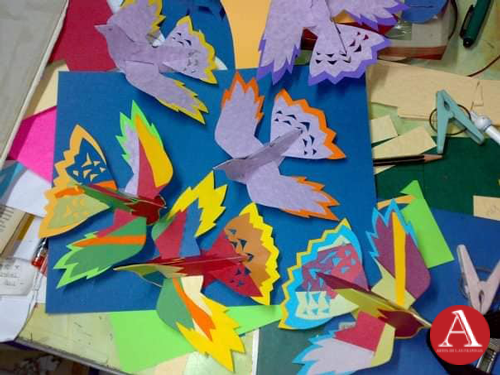
Paper cutouts of Birds, 2012
What works of Sievert were left behind will remain in your family collection?
In 2007, we faced financial constraints and could no longer afford to stay in our Baesa apartment. This prompted us to move to my mother’s residence in Bahay Toro, Quezon City. The space behind our house became our studio. This is probably the main reason that affected his productivity as an artist. Regrettably, a few of his works were stored in the backyard, exposed to rainwater from a leaky roof which led to some of his pieces suffering from irreparable damage. The retrieved artworks continue to hold a place in our family collection.
Where can art collectors access his works?
Since 2005, most of Sievert’s works have been housed at the Heritage Art Gallery, as we lack the necessary space to store them ourselves. A few are also housed at my brother Boni’s home.
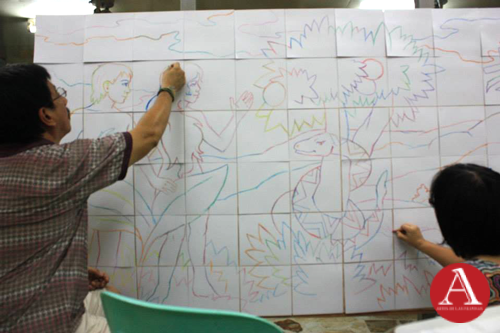
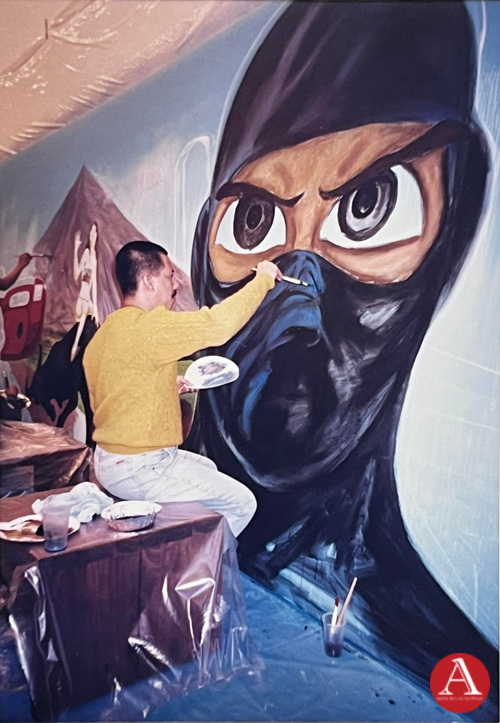
Why should art collectors add a Federico Sievert work to their private collections?
Art collectors should add Federico Sievert’s work to their private collections because his pieces capture his personal view of society, his life as a father and a husband and his spiritual journey as a follower of Jesus. His works tell stories of his real-life experiences and reflections.
Also, Federico Sievert’s works authentically captured his personal experiences in an unjust society, his profound emotions as a father navigating joy, fear and concerns for his family as well as his spiritual journey as a follower of Jesus. Through his art, Sievert offers a unique perspective, serving as a faithful witness to the world around him and conveying important messages that resonate with viewers. His works tell the stories of real-life encounters and reflections, making them a valuable addition to any art collection seeking depth and meaning.
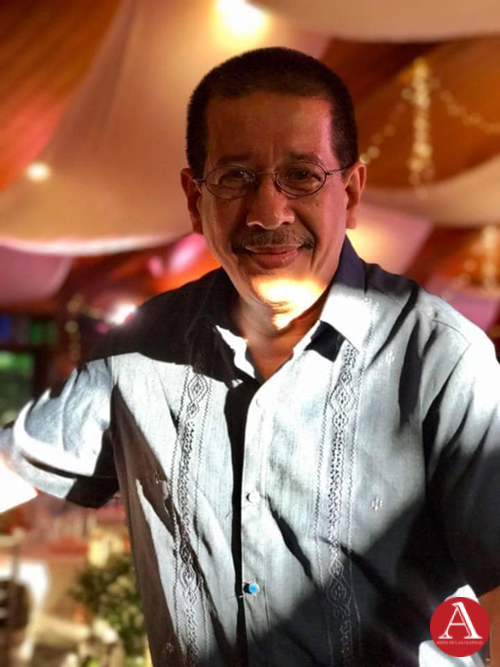
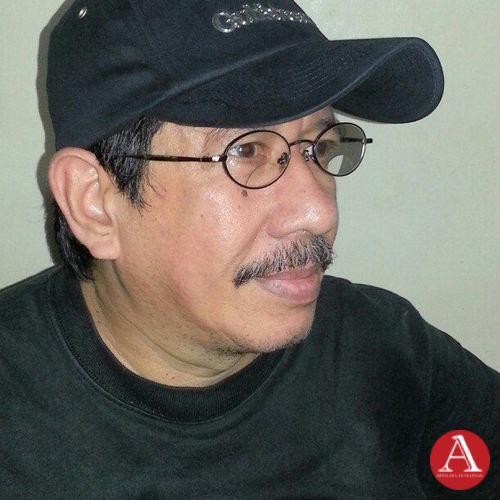
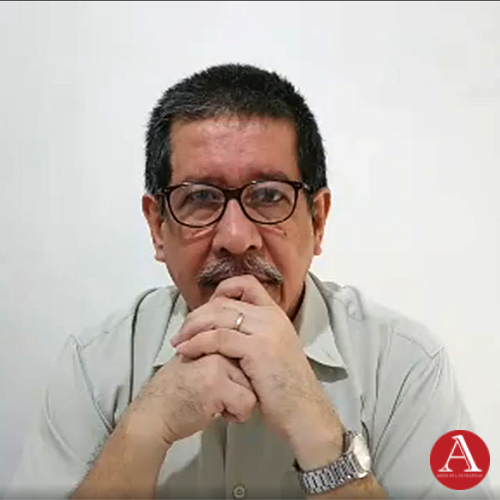
Federico Sievert in 2021
What do you think is the contribution of Federico Sievert’s body of work to the history of Philippine art?
Federico Sievert’s body of work makes a valuable contribution to the history of Philippine art through his passionate approach to capturing the essence of his time and society. His artworks serves as reflections of the socio-political issues and his sensitivity to his surroundings during his era, offering a glimpse into the cultural landscape of the Philippines. The sincerity and depth of emotion in his pieces demonstrate his commitment to expressing his innermost thoughts and feelings through his art. While the ultimate assessment of his contribution to Philippine art history will be left to future generations and art historians, those who knew Federico Sievert personally recognize and appreciate his dedication as a passionate artist who poured his heart and soul into his works to convey meaningful messages.
Recent Articles
.png) FILIPINO ART COLLECTOR: ALEXANDER S. NARCISO
FILIPINO ART COLLECTOR: ALEXANDER S. NARCISOMarch 2024 - Alexander Narciso is a Philosophy graduate from the Ateneo de Manila University, a master’s degree holder in Industry Economics from the Center for Research and...
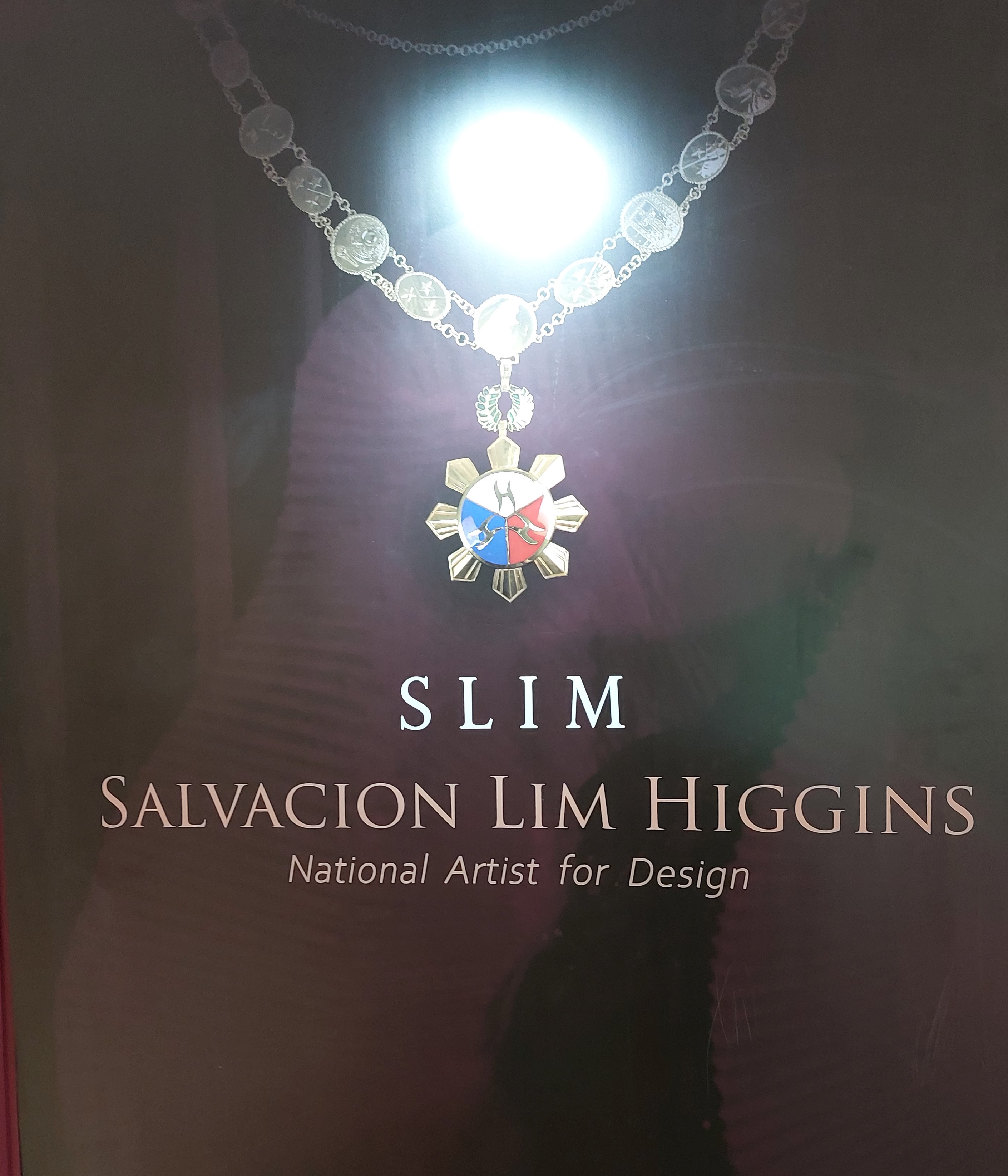 An Exhibition of the Design Legacy of Salvacion Lim Higgins
An Exhibition of the Design Legacy of Salvacion Lim HigginsSeptember 2022 – The fashion exhibition of Salvacion Lim Higgins hogged the headline once again when a part of her body of work was presented to the general public. The display...
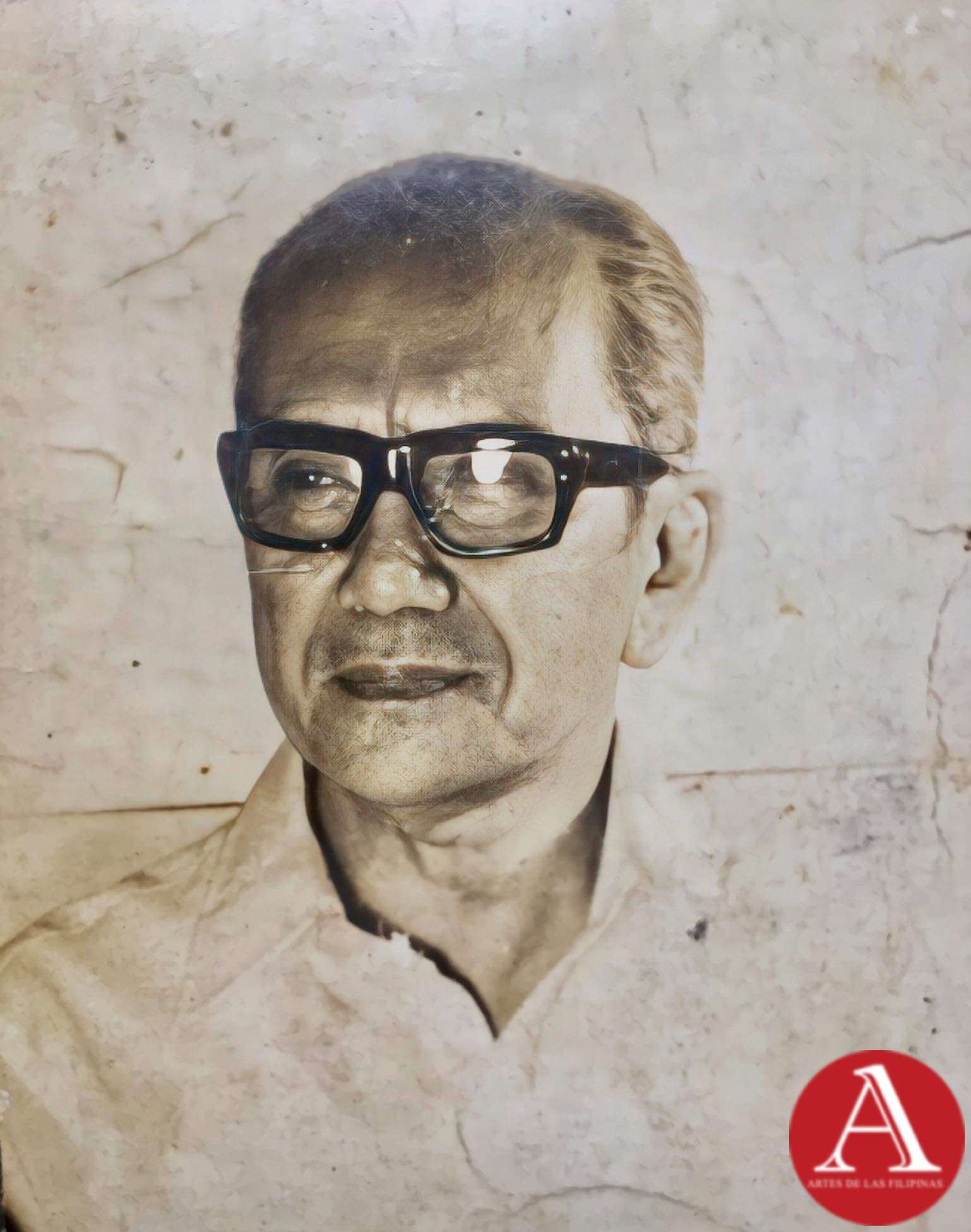 Jose Zabala Santos A Komiks Writer and Illustrator of All Time
Jose Zabala Santos A Komiks Writer and Illustrator of All TimeOne of the emblematic komiks writers in the Philippines, Jose Zabala Santos contributed to the success of the Golden Age of Philippine Komiks alongside his friends...
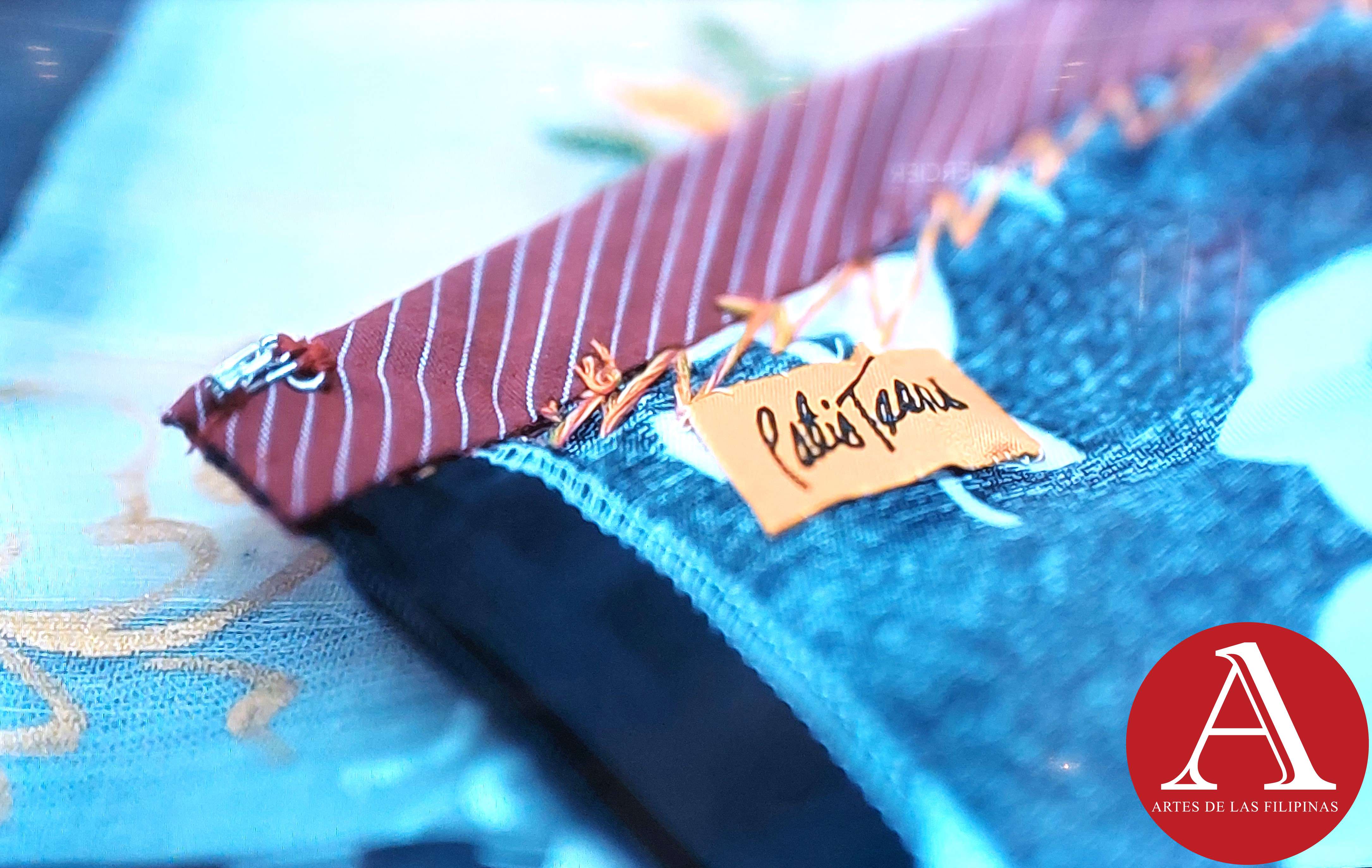 Patis Tesoro's Busisi Textile Exhibition
Patis Tesoro's Busisi Textile Exhibition
The Philippine Art Book (First of Two Volumes) - Book Release April 2022 -- Artes de las Filipinas welcomed the year 2022 with its latest publication, The Philippine Art Book, a two-volume sourcebook of Filipino artists. The...
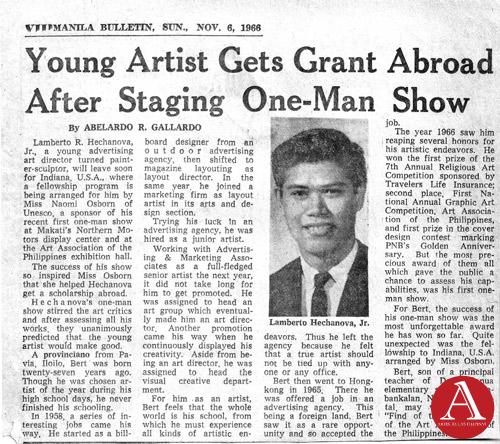 Lamberto R. Hechanova: Lost and Found
Lamberto R. Hechanova: Lost and FoundJune 2018-- A flurry of renewed interest was directed towards the works of Lamberto Hechanova who was reputed as an incubator of modernist painting and sculpture in the 1960s. His...
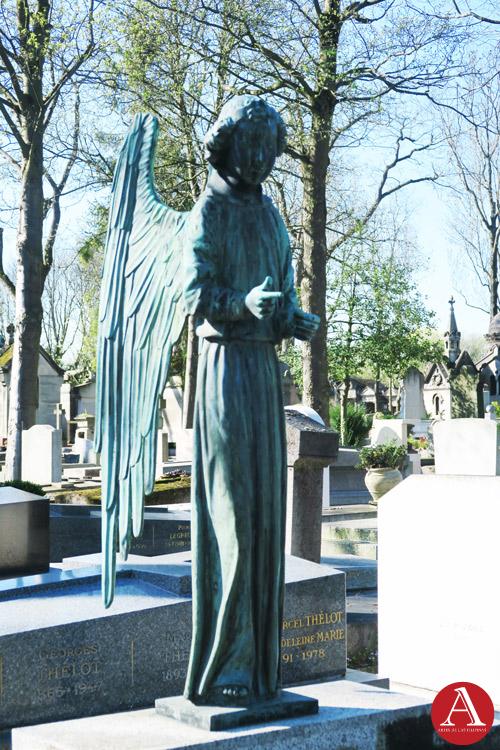 European Artists at the Pere Lachaise Cemetery
European Artists at the Pere Lachaise CemeteryApril-May 2018--The Pere Lachaise Cemetery in the 20th arrondissement in Paris, France was opened on May 21, 1804 and was named after Père François de la Chaise (1624...
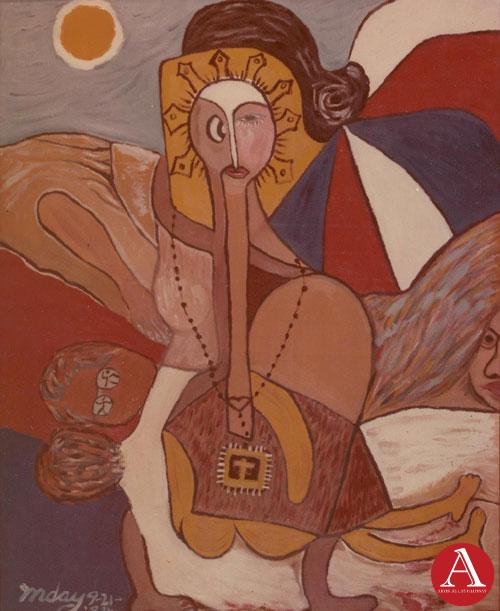 Inday Cadapan: The Modern Inday
Inday Cadapan: The Modern IndayOctober-November-December 2017--In 1979, Inday Cadapan was forty years old when she set out to find a visual structure that would allow her to voice out her opinion against poverty...
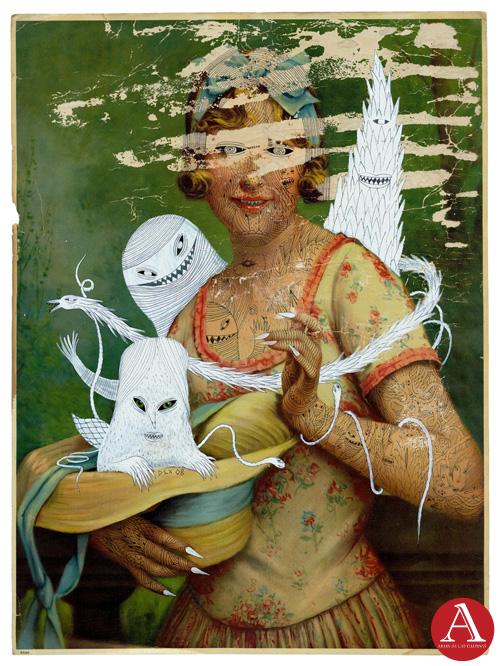 Dex Fernandez As He Likes It
Dex Fernandez As He Likes ItAugust-September 2017 -- Dex Fernandez began his art career in 2007, painting a repertoire of phantasmagoric images inhabited by angry mountains, robots with a diminutive sidekick,...
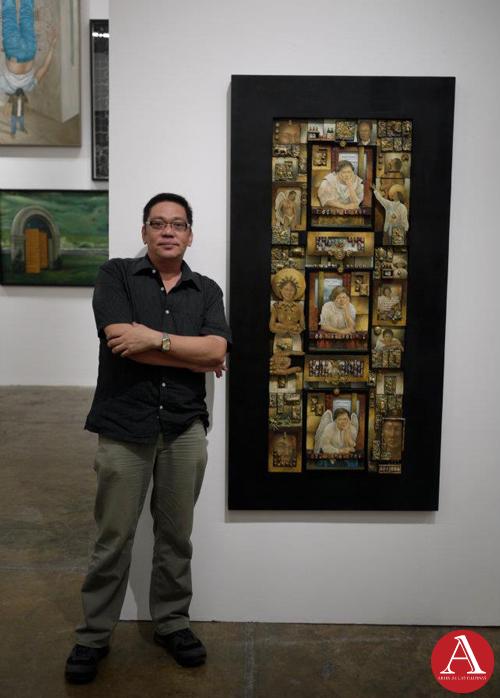 Noel Soler Cuizon's Gesamtkunstwerk and Everything in Between
Noel Soler Cuizon's Gesamtkunstwerk and Everything in BetweenApril-May 2017—The public exhibition of Noel Soler Cuizon’s works began in 1987 when he was a member of Hulo, a group of alumni students of the Philippine Women’s...




